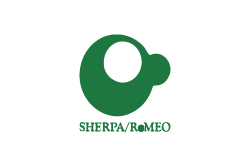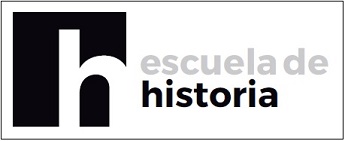La Res Publica Romana: instituciones y participación popular
DOI:
https://doi.org/10.35305/aeh.v0i31.277Abstract
Los romanos nunca pusieron su constitución por escrito, lo que facilitó su dinamismo y flexibilidad. Tras un largo proceso de experimentación, la “constitución romana” fue el resultado final de un desarrollo que duró siglos. La “constitución” romana en época republicana se apoyaba en tres pilares: senado, magistraturas y asambleas del pueblo. La República romana fue esencialmente un régimen aristocrático con tendencias oligárquicas, aunque con una limitada pero no despreciable participación popular en la toma de decisiones.Palabras Clave: “constitución”; mos maiorum; senado; magistraturas; asambleas populares; democracia, aristocracia.Downloads
References
Beck, H. – Duplá, A. – Jehne, M. and Pina Polo, F. (eds.) 2011. Consuls and Res Publica. High Office Holding in the Roman Republic, Cambridge
Becker, M. 2017. Suntoque aediles curatoresurbis. Die Entwicklung der StadtrömischenAedilität in republikanischerZeit, Stuttgart
Bleicken, J. 1955. Das Volkstribunat der klassischenRepublik, Göttingen
Bleicken, J. 71995 Die Verfassung der RömischenRepublik, Paderborn
Bonnefond-Coudry, M. 1989. Le Sénat de la Républiqueromaine, Roma
Brennan, T.C. 2000.The Praetorship in the Roman Republic, Oxford
Cornell, T. 1995) The Beginnings of Rome: Italy and Rome from the Bronze Age to the Punic Wars, Londres
Daguet-Gagey, A. 2015.Splendor aedilitatum: l’edilité à Rome (Ier s. avant J.-C.-IIIe s. après J.-C.), Roma
Develin, R. 1975. “Comitia Tributa Plebis”, Athenaeum 53, 302-337
Farrell, J. 1986. “The Distinction between comitia and concilium”, Athenaeum 74, 407-438
Flower, H. 2010.Roman Republics, Princeton
Giovannini, A. 1983.ConsulareImperium, Basilea
Hartfield, M. 1982. The Roman Dictatorship: Its Character and Its Evolution, Diss. Universidad California Berkeley
Kunkel, W. - Wittmann, R. 1995.Staatsordnung und Staatspraxis der römischenRepublik, 2.Abschnitt: Die Magistratur, Munich
Lintott, A. 1999.The Constitution of the Roman Republic, Oxford
Morstein-Marx, R. 2004.Mass Oratory and Political Power in the Late Roman Republic, Cambridge
Pina Polo, F. 1989. Las contiones civiles y militares en Roma, Zaragoza
Pina Polo, F. 1996. Contra arma verbis: Der RednervordemVolk in den spätenrömischenRepublik, Stuttgart
Pina Polo, F. 2011. The consul at Rome: The civil functions of the consuls in the Roman Republic, Cambridge
Pina Polo, F. 2011. “Officium consulis. Las funciones civiles de los cónsules durante la República romana (367-81 a.C.)”, en M. Campagno, J. Gallego, C. García Mac Gaw (eds.), El Estado en el Mediterráneo antiguo. Egipto, Grecia, Roma, Buenos Aires, 305-324
Pina Polo, F. 2011. “Mosmaiorum como instrumento de control social de la nobilitas romana“, Páginas. Revista digital de la Escuela de Historia, Universidad de Rosario, 4, 53-77
Pina Polo, F. 2013. “The political role of consulesdesignati at Rome”, Historia 62, 420-452
Pina Polo, F. (en prensa). The Quaestorship during the Republic at Rome and Abroad, KlioBeihefte, Berlín
Ryan, F. 1998. Rank and Participation in the Republican Senate, Stuttgart
Sancho, L. 1984. El tribunado de la plebe en la República arcaica (494-287 a.C.), Zaragoza
Sandberg, K. 2001. Magistrates and Assemblies. A Study of Legislative Practice in Republican Rome, Roma
Suohlati, J. 1963. The Roman Censors, Helsinki
Taylor, L.R. 1960. The Voting Districts of the Roman Republic, Roma
Taylor, L.R. 1966. Roman Voting Assemblies, Ann Arbor 1966
Thommen, L. 1989. Das Volkstribunat der spätenrömischenRepublik, Stuttgart
Wilson, M.B. 2017.The Needed Man: The Evolution, Abandonment, and Resurrection of the Roman Dictatorship, CUNY Academic Works
Yakobson, A. 1999.Elections and Electioneering in Rome, Stuttgart
Participación popular y ¿democracia? en Roma
Beck, H. 2008. “Die Rollen des Adligen. Prominenz und aristokratischeHerrschaft in der römischenRepublik”, en H. Beck, P. Scholz y U. Walter (eds.), Die Macht der Wenigen.AristokratischeHerrschaftspraxis, Kommunikation und edlerLebensstil in Antike und FrüherNeuzeit, Oldenbourg – Munich, 101-123
Clemente, G. 2018. “Democracy without the People: The Impossible Dream of the Roman Oligarchs (and of some Modern Scholars)”, Quaderni di storia 87, 87-119
Courrier, C. 2014. La plèbe de Rome et sa culture (fin du IIe siècle av. J.-C. – fin du Ier siècle ap. J.-C.), Roma
David, J.-M. 2006. “Una repubblica in cantiere”, Studi Storici 47.2, 365-376
Duplá, A. 2007. “Interpretaciones de la crisis tardorrepublicana: del conflicto social a la articulación del consenso”, StudiaHistorica, Historia Antigua 25, 185-201
Eder, W. 1991. “Who Rules? Power and Participation in Athens and Rome”, en A. Molho – K. Raaflaub – J. Emlen (eds.), City States in Classical Antiquity and Medieval Italy, Stuttgart, 169-196
Flaig, E. 1995.“Entscheidung und Konsens.Zu den Feldern der politischenKomunikationzwischenAristokratie und Plebs”, en M. Jehne (ed.), Demokratie in Rom? Die Rolle des Volkes in der Politik der römischenRepublik, Stuttgart, 77-127
Flaig, E. 2003.RitualisiertePolitik. Zeichen, Gesten und HerrschaftimAlten Rom, Göttingen
Gabba, E. 1997. “Democrazia a Roma”, Athenaeum 85, 266-271
Hammer D. (ed.) 2015.A Companion to Greek Democracy and the Roman Republic, Malden, MA
Harris, W.V. 1990. “On Defining the Political Culture of the Roman Republic”, CPh 85, 288-294
Hölkeskamp, K.-J. 2000. “The Roman Republic: Government of the People, by the People, for the People?”,Scripta Classica Israelica 19, 203-223
Hölkeskamp, K.-J. 2004. RekonstruktioneneinerRepublik. Die politische Kultur des antiken Rom und die Forschung der letzten Jahrzehnte, Munich (edición francesa 2008 inglesa 2010, e italiana 2016)
Hölkeskamp, K.-J. 2006. “Rituali e cerimonie alla romana: nuove prospettive sulla cultura política dell’età repubblicana”, Studi Storici 47.2, 319-364
Hodgson, L. 2017. Res publica and the Roman Republic: ‘Without Body or Form’, Oxford – Nueva York
Hurlet, F. 2012. “Démocratie à Rome? Quelle démocratie? Enrelisant Millar (et Hölkeskamp)”, en St. Benoist (ed.), Rome, a City and its Empire in Perspective: The Impact of the Roman World through Fergus Millar’s Research, Leiden, 19-43
Jehne, M. (ed.) 1995.Demokratie in Rom? Die Rolle des Volkes in der Politik derrömischenRepublik, Stuttgart
Jehne, M. 2006. “Methods, Models and Historiography”, en N. Rosenstein y R. Morstein-Marx (eds.) A Companion to theRomanRepublic, Malden MA, 14-25
Lintott, A.W. 1987. “Democracy in the Middle Republic”, ZSS 104, 34-52
Millar, F. 1984. “The Political Character of the Classical Roman Republic, 200-151 B.C.”, JRS 74, 1-19 = 2002. H.M. Cotton – G.M. Rogers (eds.), Rome, the Greek world, and the East. Vol.1. The Roman Republic and the Augustan revolution, Chapel Hill, 109-142
Millar, F. 1986. “Politics, Persuasion and the People before the Social War (150-90 B.C.)”, JRS 76, 1-11 = The Roman Republic and the Augustan revolution, 143-161
Millar, F. 1989. “Political Power in Mid-Republican Rome: Curia or Comitium?”,JRS 79, 138-150 =The Roman Republic and the Augustan revolution, 85-108
Millar, F. 1995. “Popular Politics at Rome in the Late Republic”, en I. Malkin-Z.W. Rubinsohn (eds.), Leaders and masses in the Roman world: studies in honor of ZviYavetz, Leiden, 91-113 = The Roman Republic and the Augustan revolution, 162-182
Millar, F. 1998.The Crowd in Rome in the Late Republic, Ann Arbor, Michigan
Moatti, Cl. 2018. Res publica. Histoireromaine de la chose publique, París
Mouritsen, H. 2001. Plebs and Politics in the Late Roman Republic, Cambridge
Mouritsen, H. 2017. Politics in the Roman Republic, Cambridge
North, J.A. 1990. “Democratic Politics in Republican Rome”, Past and Present 126, 3-21
North, J. 2004. “Democratics politics in Republican Rome”, en R. Osborne, Studies in Ancient Greek and Roman Society, Cambridge, 141-158
Pani, M. 2002. “Ancora sulla democrazia a Roma. A proposito di H. Mouritsen, Plebs and Politics in the Late Roman Republic”, Quaderni di storia, 55, 273-284
Pina Polo, F. 2012. “Contio, auctoritas and freedom of speech in Republican Rome”, en St. Benoist (ed.), Rome, a City and its Empire in Perspective: The Impact of the Roman World through Fergus Millar’s Research, Leiden, 45-58
Tatum, W. J. 2009. “Roman Democracy?”, en R.K. Balot (ed.), A Companion to Greek and Roman Political Thought, Oxford, 214-222
Vanderbroeck, P.J.J. 1987. Popular Leadership and Collective Behavior in the Late Roman Republic (ca. 80-50 B.C.),Amsterdam
Will, W. 1991. Der römische Mob.SozialeKonflikte in der spätenRepublik, Darmstadt
Wiseman, T.P. 1999. “Democracy allaromana. Review of Fergus Millar: The Crowd in Rome in the Late Republic”, Journal of Roman Archaeology 12, 537-540
Wiseman, T.P. 2002. “Roman History and the Ideological Vacuum”, en T.P. Wiseman (ed.), Classics in Progress.Essays on Ancient Greece and Rome, Oxford, 285-310
Yakobson, A. 2006. “Il popolo romano, il sistema e l’élite”, Studi Storici 47.2, 377-394
Yakobson, A. 2010. “Traditional Political Culture and the People’s Role in the Roman Republic”, Historia 59, 282-302
Yavetz, Z. 1969. Plebs and Princeps, Oxford
Published
How to Cite
Issue
Section
License
Los autores que publican en esta revista están de acuerdo con los siguientes términos:
Al momento de enviar sus contribuciones, los colaboradores deberán autorizar su publicación conservando los derechos de autoría, y transfiriendo a la revista todos los derechos protegidos por las leyes de propiedad intelectual que rigen en Argentina, que implican la edición para difundir la obra en soporte digital en que se aloja la revista. Deberán declarar que poseen el permiso del archivo o repositorio donde se obtuvieron los documentos que se anexan al trabajo, cualquiera sea su formato (manuscritos inéditos, imágenes, archivos audiovisuales, etc.), permiso que los autoriza a publicarlos y reproducirlos, liberando a la revista y sus editores de toda responsabilidad o reclamo de terceros.
Asimismo, los autores deben adherir a la licencia Creative Commons denominada “Reconocimiento - No Comercial- Compartir Igual CC BY-NC-SA”, mediante la cual el autor permite copiar, reproducir, distribuir, comunicar públicamente la obra y generar obras derivadas, siempre y cuando se cite y reconozca al autor original. No se permite, sin embargo, utilizar la obra con fines comerciales. Los autores podrán establecer acuerdos adicionales para la distribución no exclusiva de la versión de la obra publicada en la revista (por ejemplo, situarlo en un repositorio institucional o publicarlo en un libro), con el reconocimiento de haber sido publicado primero en esta revista.



.png)







1.jpg)
.png)














1.png)
